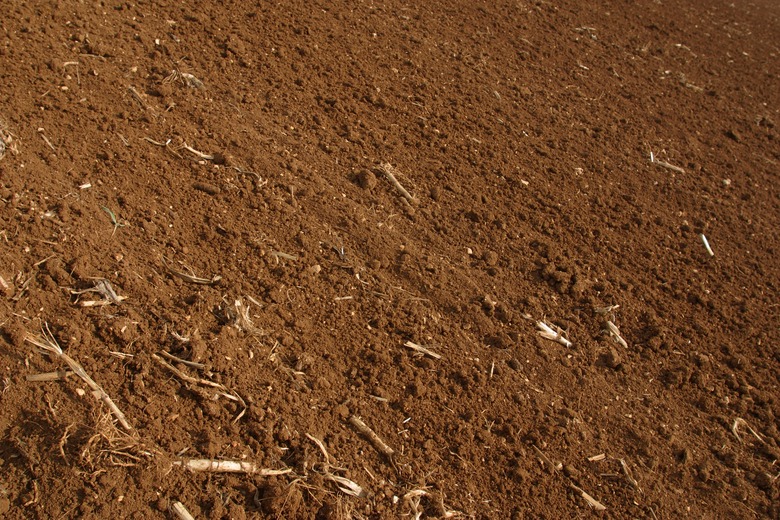Fun Facts About Topsoil & Subsoil
Topsoil is the earth's outer layer, supporting human, animal and plant life. Subsoil includes the layers beneath it that are continually evolving. Without it, food production would not be possible. Even the animals we raise for food need what grows on the land for their own sustenance. While most people are familiar with topsoil and subsoil to some degree, there are many lesser-known fun facts that may make you look at the ground in a new way.
What Soil Is
What Soil Is
Soil is made up of sand particles and prehistoric, decomposed rocks to which organic matter has been added for millions of years in the form of decaying vegetation and animal tissue. It can take 500 to 1,000 years for the earth to produce a single inch of topsoil. In some areas, such as on ranches and large farms, soil is enriched by animal droppings, a very efficient form of natural recycling. Considering the fact that cows, sheep or goats don't stand in the same spot all day to eat, they fertilize a wide area. Undisturbed land is rich in soil from the decomposing prairie grasses and other vegetation.
Soil Layers
Soil Layers
Soil forms different layers on the earth's surface that are classified as horizons. Topsoil, or the A horizon, forms the uppermost layer and is where plants get their start. As they grow, their roots extend deeper into the soil, reaching subsoil, the B horizon. Also called loam, topsoil is the richest layer, as that is where organic decomposition takes place. It is also the layer most directly affected by weather events and sunlight. The B horizon is composed of sand and clay, and contains very little organic matter. Large amounts of subsoil are brought to the surface by earthworms as they tunnel through the soil. A single earthworm can digest 36 tons of soil in a year.
Uses for Topsoil
Uses for Topsoil
Topsoil creates new gardens and lawns and renews the soil in areas where it was depleted by erosion and development. Spreading 5 tons of topsoil over an acre of land creates a layer the thickness of a dime. Topsoil is sold in bulk at garden centers and is bagged in smaller amounts to patch bare spots in lawns or add to the soil in flowerbeds and gardens. It's generally believed that the darker topsoil is, the better it is, but that's not always the case. Dark topsoil is most likely obtained from wetlands and may not do well in areas routinely subjected to drier conditions.
Home Sweet Home
Home Sweet Home
Not only does topsoil support plant and animal life, it is home to millions of species of insects and burrowing animals. These creatures not only call the soil home, but they also help to maintain it by enriching and aerating it. As earthworms, beetles and grubs move through both topsoil and subsoil, they create tunnels allowing air in and open more spaces for water to move through. This also helps roots to penetrate the soil more deeply, a symbiotic process benefiting both insects and plant. According to the Forest Preserve District of Cook County, Illinois, up to 60-million bacteria exist in a single particle of surface soil and 3,000 mites and small spiders in the top 3 inches of a single square foot of earth.
Cite This Article
MLA
Lovejoy, Rachel. "Fun Facts About Topsoil & Subsoil" sciencing.com, https://www.sciencing.com/fun-facts-about-topsoil-subsoil-12600654/. 23 September 2011.
APA
Lovejoy, Rachel. (2011, September 23). Fun Facts About Topsoil & Subsoil. sciencing.com. Retrieved from https://www.sciencing.com/fun-facts-about-topsoil-subsoil-12600654/
Chicago
Lovejoy, Rachel. Fun Facts About Topsoil & Subsoil last modified March 24, 2022. https://www.sciencing.com/fun-facts-about-topsoil-subsoil-12600654/
